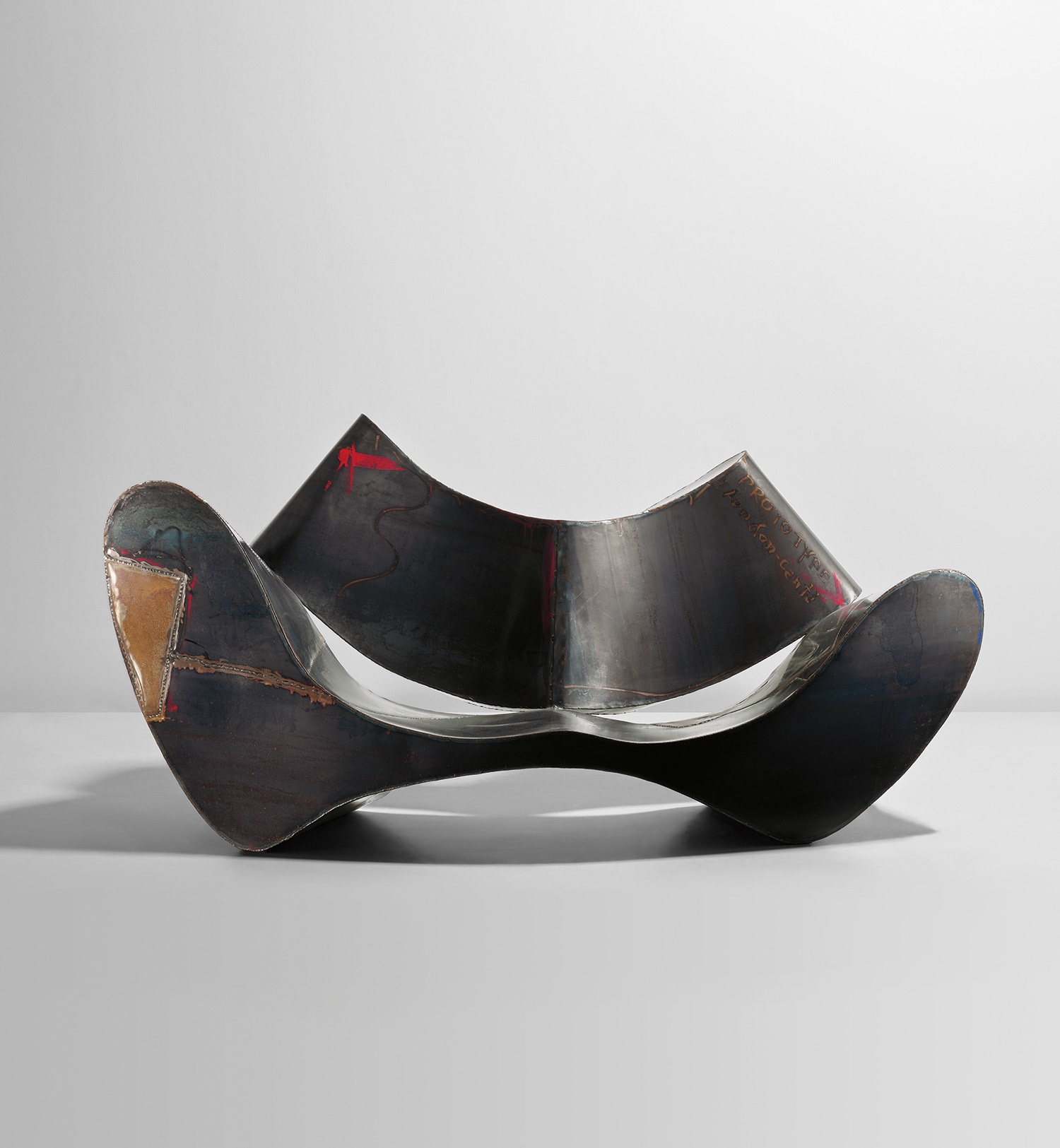

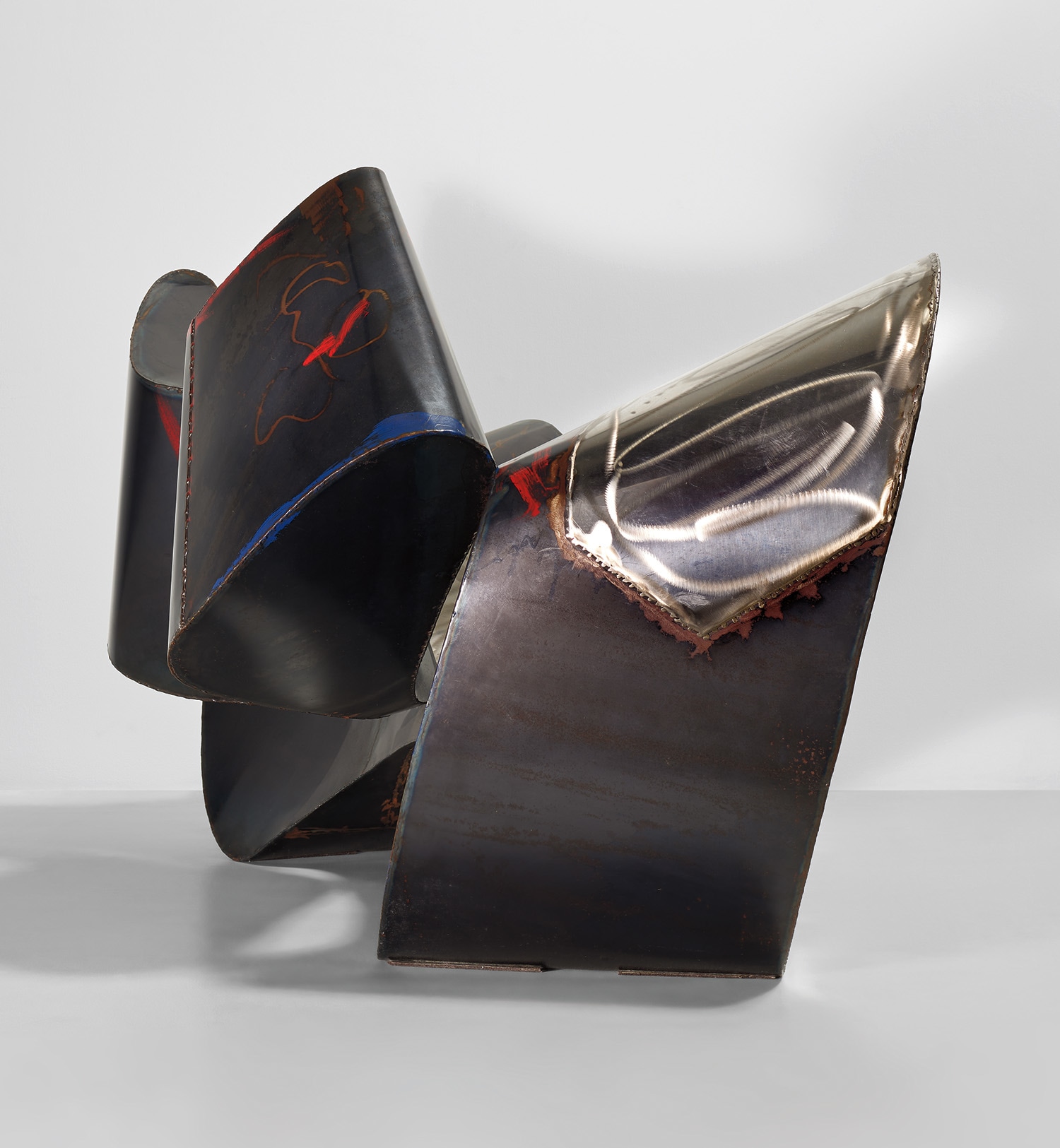
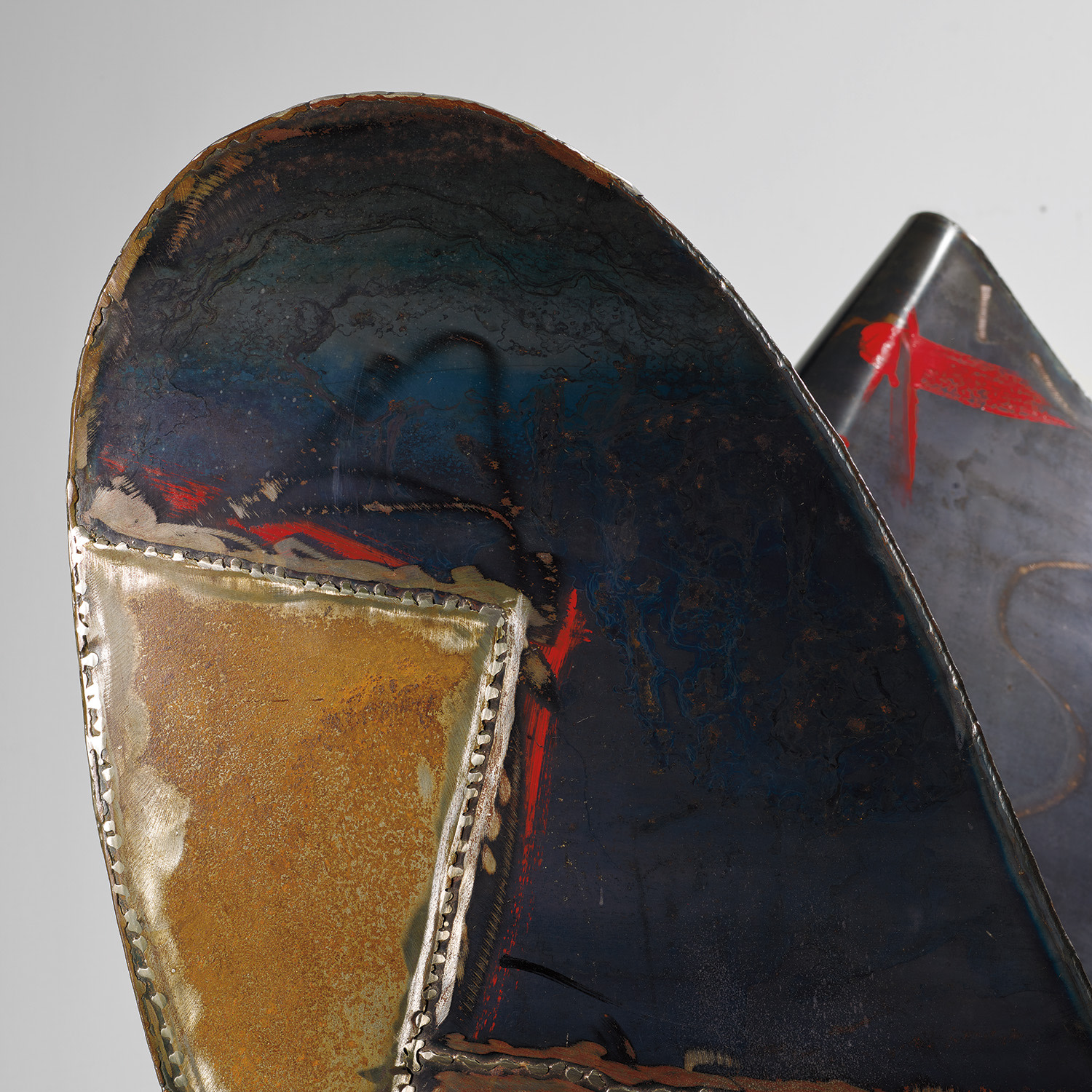
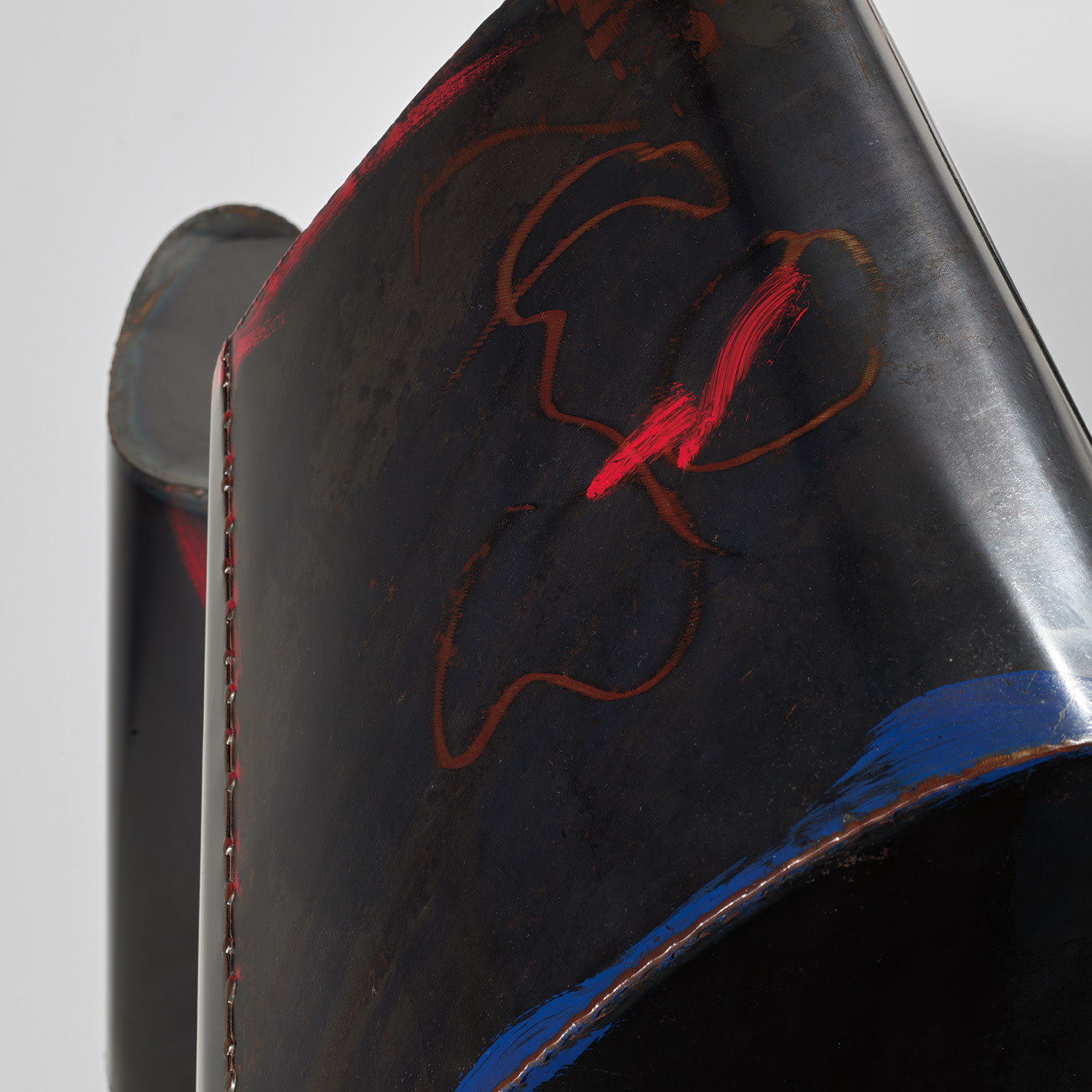
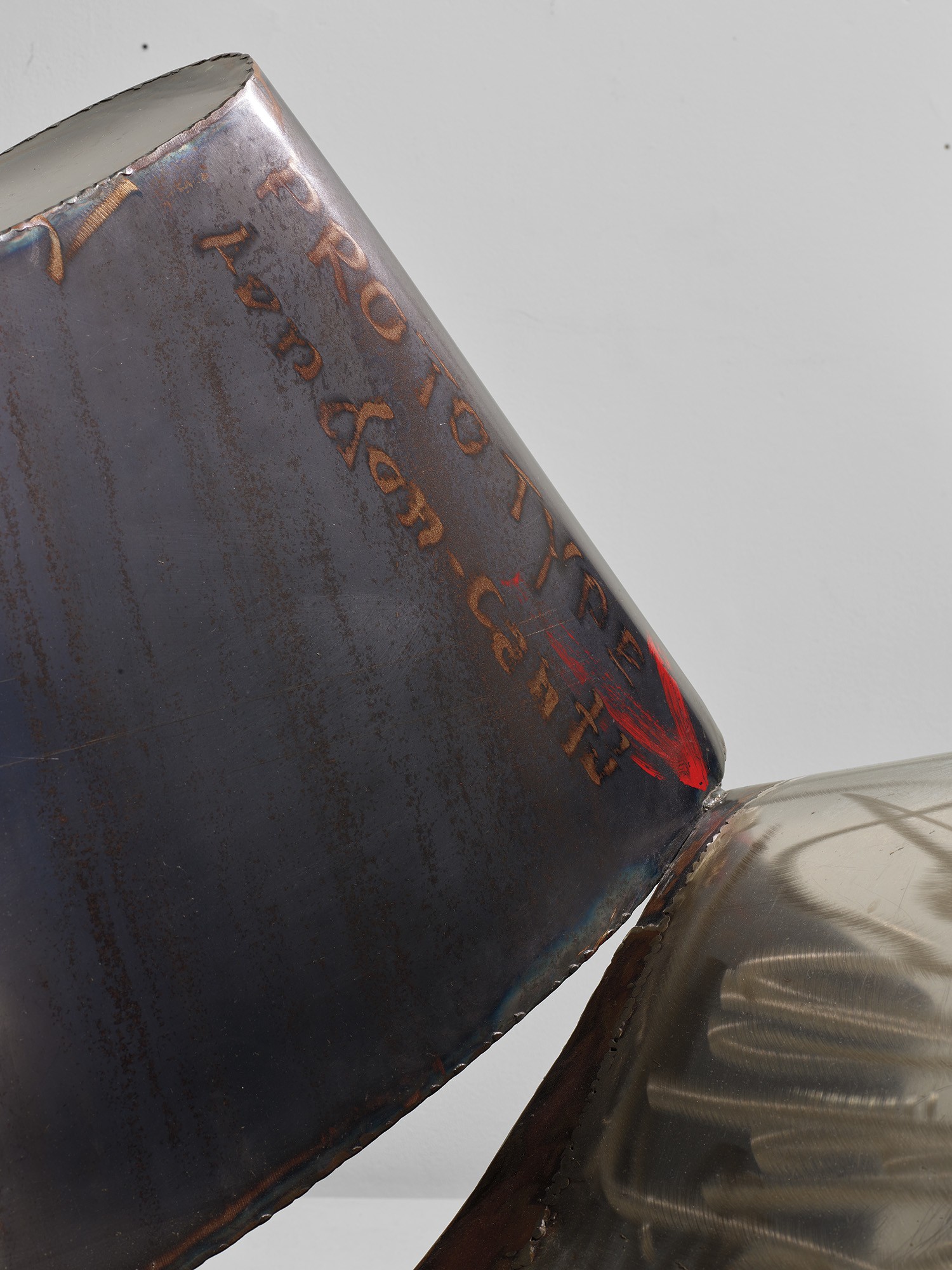






63
Ron Arad
Prototype ‘D-Sofa’
Full-Cataloguing
By Deyan Sudjic
Director Emeritus of the Design Museum
The ‘D Sofa’ is one of the key works of Ron Arad’s career, as well as an important step in the emergence of a distinct category of collectors of contemporary design. Conceived between 1993 and 1994, it marks Arad’s gradual transition from artisan magic to studio production, setting a path that others would follow, if not formally, then in methodology.
Arad began in the 1980s producing a cascade of inventive and original new work based on creative repurposing and surreal juxtaposition. It was a strategy for self-produced design that grew out of the particular circumstances of London at the time when mainstream manufacturers or galleries showed little appetite to invest in challenging new work. There was his famous ‘Rover’ chair, which coupled a recycled car seat with steel tube, a cast concrete audio system, a desk light based on a car ariel, and furniture pieces cut from metal sheets and welded together by Arad and his assistants.
After Arad moved from One Off, his base in Covent Garden, to a purpose designed studio in Chalk Farm, he had a change of emphasis. Rather than become still more closely associated with handmade craft pieces, he started to work outside Britain with manufacturers such as Vitra, Kartell and Alessi to mass produce the industrial objects that he designed. He simultaneously embarked on his first serious architectural project, the foyer of the Tel Aviv Opera House, began his highly influential teaching career, first at the Vienna Hochschule for Angewandte Kunst, and later at the Royal College of Art, and established Ron Arad Studio in Como. Established in 1994 and lasting for five years, the studio was a partnership with a highly skilled Italian sheet metal fabricator that took on the making of Arad’s editioned pieces.
The ‘D Sofa’ would be one of the first pieces to be produced in this way. It was made in three versions, in mirror polished stainless steel, in patinated steel and a mix of steel and copper. It was the starting point for a series of highly finished objects that often quoted the forms Arad had devised for his earlier handmade works but using different materials and finishes. Arad’s initiative helped trigger a number of galleries to start working with a new generation of designers to produce editioned work that is sometimes called ‘design art’.
Rather than make a maquette or a detailed set of design drawings, the ‘D Sofa’ is the outcome of three prototypes that Arad worked on with his assistants. It was a spontaneous process, based on picking up available materials in the studio, with Arad drawing on metal sheets to trace out where to cut and weld them together, almost as a kind of collage. Each of the three prototypes is a little different, each of the sequence learns from its predecessor to define the piece’s proportions and shape. They are a fascinating insight into Arad’s working methods.
Paola Antonelli, the Museum of Modern Art’s curator for design refers to the ‘D Sofa’ as the ‘Double Sofa’. She included one of the three prototypes in ‘No Discipline’, the MoMA monograph on Arad’s work in the summer of 2009. At the time of the exhibition, Arad called it 'One of my favourite pieces'. He went on to explain: 'It's like patchwork. I just made the shape with whatever bit and pieces I had lying on the floor of the studio. Some of them are stainless steel, some are mild steel, some have what look like doodles that I used to draw with the angle grinder. It aged beautifully and it got an amazing patina. And it was like left over paint and stuff like that, polished copper, stainless steel'.
Unlike the formal perfection of the editioned pieces made in Italy with their immaculate mirror bright surfaces that have the paradoxical effect of making the volume of the piece seem to disappear, the prototypes showing traces of Arad’s handwork have a heft and weight. The dematerialising impact of mirror finishes was a theme that Arad explored in his installation in the Fondation Cartier in Paris in 1994, in which he filled an entire gallery with perfectly flat serpentine shaped tabletops that contrast solid with void. Because they reflect the ceiling and the trees in the garden outside, the tables seem to vanish, and make the dark gaps running like streams and rivers between the tables appear to be surfaces. Structurally the ‘D Sofa’ is made from two ribbon like pieces, one that forms the back, the other accommodates the seat. The two elements barely touch, resting on just three points, to create an open slot, that in the case of the mirror finish editioned work achieves an effect similar to the Cartier tables. Positive becomes negative and negative becomes positive. The rougher oxidised metal gives the prototypes an entirely different character, a transformation that reflects the intuitive leaps of Arad’s creative approach.
Ron Arad
Israeli | 1951Ron Arad's work and career is characterized by his movement between modes and constant experimentation. Arad was born in Tel Aviv, Israel in 1951 and studied at the Jerusalem Academy of Art before moving to London in 1973. He began his practice in London in the early 1980s and set up One Off Ltd, focused on limited edition objects, with his partner Caroline Thorman. A decade later he had moved to industrial production techniques and collaborations with large design firms such as Vitra and Kartell.
A persistent theme throughout his work is innovation and the idea of the "new." Still producing work today, Arad uses the latest technology to produce his designs and also integrates it within his pieces, such as his Lolita Chandelier (2004) that can receive and display text messages. Arad also continually experiments with materials and has an exceptional skill to coax volume and undulation out of them, with a particular affinity for metal. His works such as The Big Easy chair (1988) walk the line between design and sculpture. Once an outsider, Arad's relentless energy to design, build and collaborate has placed him firmly within the highest ranks of the design world.